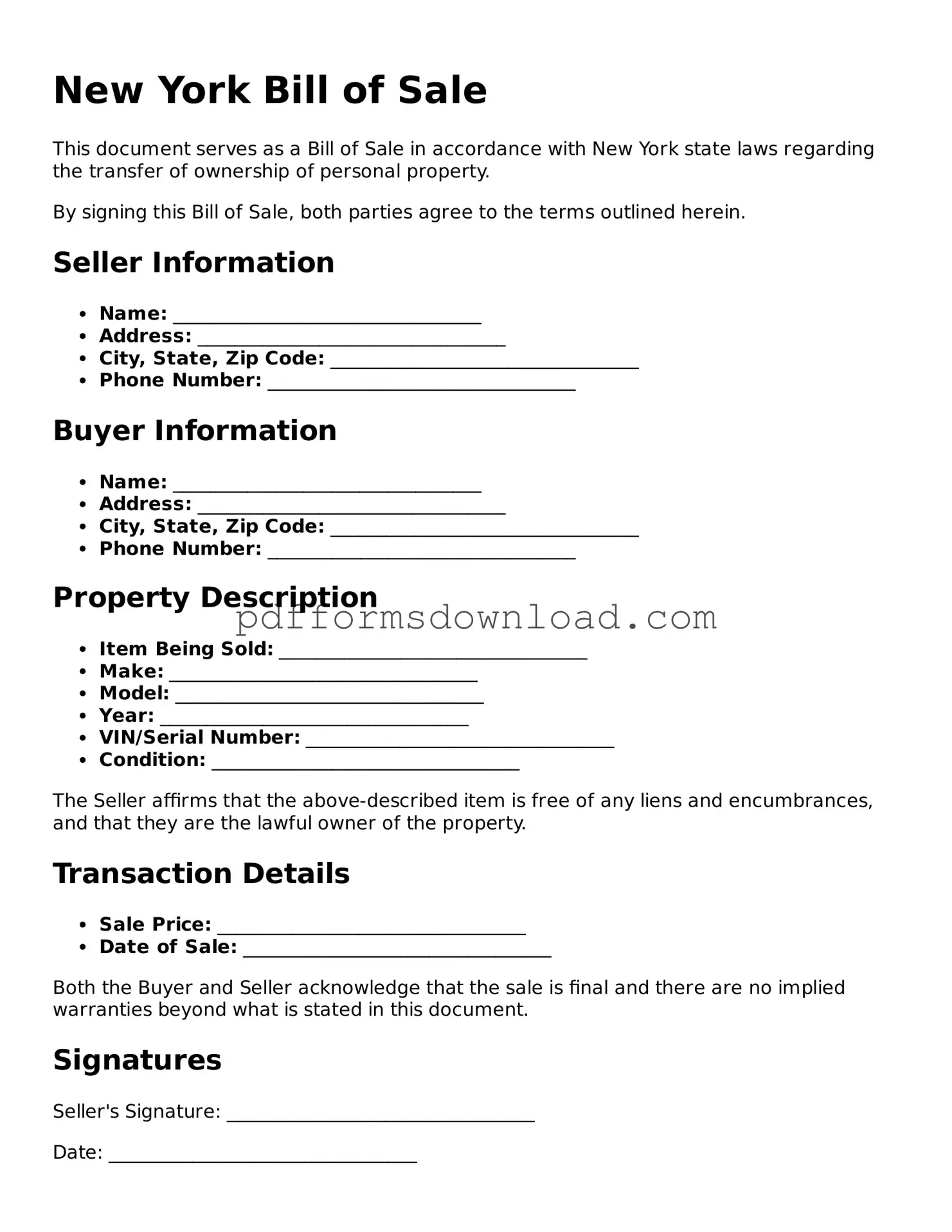A Bill of Sale is a legal document that serves as proof of the transfer of ownership of personal property from one party to another. In New York, this document is commonly used for transactions involving vehicles, boats, and other tangible items. It details the terms of the sale, including the purchase price, the date of the transaction, and the identities of both the buyer and the seller.
What information should be included in a New York Bill of Sale?
A comprehensive Bill of Sale should include several key pieces of information. This includes the names and addresses of both the buyer and the seller, a description of the item being sold (including its make, model, and identification number if applicable), the purchase price, the date of the transaction, and any warranties or conditions related to the sale. Signatures from both parties should also be included to validate the agreement.
Can a Bill of Sale be used for vehicles in New York?
Yes, a Bill of Sale can be used for vehicle transactions in New York. It is particularly important for documenting the sale of a car, motorcycle, or boat. When registering the vehicle with the DMV, a Bill of Sale may be required to confirm the transfer of ownership. Buyers should ensure that the Bill of Sale includes all necessary details to facilitate this process.
Do I need to notarize a Bill of Sale in New York?
Notarization is not a requirement for a Bill of Sale in New York. However, having the document notarized can add an extra layer of security and authenticity. This can be beneficial in case of future disputes or if the document needs to be presented as evidence in court.
What if there are disputes after the sale?
In the event of a dispute after the sale, the Bill of Sale serves as a critical piece of evidence. It outlines the agreed-upon terms of the transaction, which can help resolve conflicts regarding payment, item condition, or ownership. If a dispute arises, parties may seek mediation or legal action based on the details documented in the Bill of Sale.
Can I create my own Bill of Sale?
Yes, individuals can create their own Bill of Sale in New York. While templates are available online, it is important to ensure that the document includes all necessary information and complies with state requirements. Customizing the document to fit the specifics of the transaction can help avoid misunderstandings and provide clarity for both parties.
Are there different types of Bill of Sale forms?
Yes, there are various types of Bill of Sale forms tailored to different types of transactions. Common examples include forms for vehicles, boats, and general personal property sales. Each type may have specific requirements or additional information that should be included to meet legal standards.
Where can I find a Bill of Sale form for New York?
Bill of Sale forms for New York can be found online through various legal websites, government resources, or by consulting with legal professionals. Many of these forms are available for free or for a nominal fee. It is advisable to ensure that the form selected is appropriate for the specific type of transaction being conducted.
